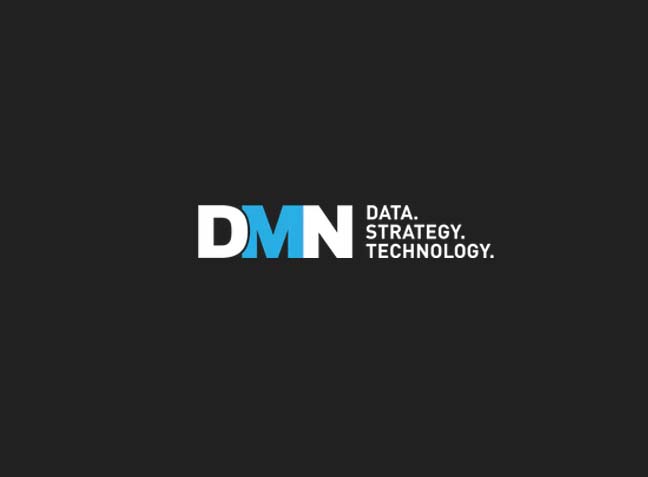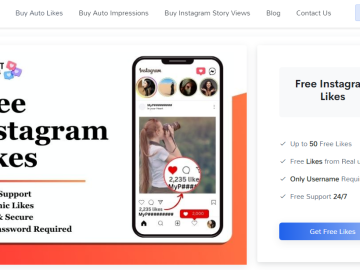In today’s fast-paced marketing world, setting up an AI marketing funnel can make a big difference. This article will guide you through the steps to create a marketing funnel that uses artificial intelligence. You’ll learn how to understand your customers, integrate AI into your strategy, and choose the right tools to help your business grow. By the end, you’ll have a clear plan to improve your marketing efforts and connect better with your audience.
Key Takeaways
- Understand the customer journey to create a better marketing funnel.
- Use AI to make customer interactions more personal and engaging.
- Identify key stages in your funnel for effective AI integration.
- Choose the right AI tools that fit your business needs.
- Stay updated on future AI trends to keep your marketing strategies relevant.
Mapping Out Your AI Marketing Funnel
When we think about our marketing efforts, it’s essential to map out our AI marketing funnel. This funnel shows the journey our customers take, from first hearing about us to making a purchase. By understanding this journey, we can better support our customers at each step.
Understanding the Customer Journey
The customer journey is like a path that leads potential buyers to our products or services. It usually has several stages:
- Awareness: Customers learn about our brand.
- Consideration: They think about whether our product meets their needs.
- Decision: They decide to buy or not.
- Retention: We work to keep them coming back.
By knowing these stages, we can create better marketing strategies that guide customers smoothly along the way.
Identifying Key Stages in the Funnel
To effectively map our funnel, we need to identify key stages. Here’s how we can do it:
- Define our ideal customers: Who are we trying to reach? What do they want?
- Outline the funnel stages: Tailor the stages based on our specific marketing cycle.
- Map customer touchpoints: Identify how customers interact with our brand at each stage.
Addressing Bottlenecks with AI
Sometimes, customers get stuck at certain points in the funnel. This is called a bottleneck. We can use AI to help identify and fix these issues. For example:
- Analyze data: AI can help us understand where customers drop off.
- Personalize experiences: AI can tailor messages to keep customers engaged.
- Automate responses: Quick replies can help move customers along faster.
By mapping out our AI marketing funnel, we can create a smoother experience for our customers, making it easier for them to choose us.
In conclusion, understanding and mapping our AI marketing funnel is crucial. It helps us see where we can improve and how we can better serve our customers. With the right strategies in place, we can enhance their journey and drive more sales.
Integrating AI into Your Marketing Strategy

In today’s fast-paced world, integrating AI into our marketing strategy is essential. By doing this, we can enhance our customer interactions and streamline our processes. Here are some key areas where AI can make a big difference:
Enhancing Customer Experience and Engagement
- Personalization: AI helps us tailor our messages to fit individual customer needs.
- 24/7 Availability: With AI chatbots, we can provide support anytime, improving customer satisfaction.
- Faster Responses: AI can analyze queries and provide quick answers, keeping our customers happy.
Utilizing AI for Data Analysis and Insights
AI can sift through large amounts of data to give us valuable insights. Here’s how:
- Understanding Behavior: AI analyzes customer actions to help us know what they want.
- Identifying Trends: It spots patterns in data that we might miss, guiding our marketing efforts.
- Optimizing Targeting: With AI, we can send the right messages to the right people at the right time.
Automating Repetitive and Scalable Tasks
AI can take over many tasks, allowing us to focus on strategy. Some tasks include:
- Email Campaigns: Automating sends and responses saves us time.
- Social Media Posts: AI can schedule and manage our posts, ensuring consistency.
- Data Entry: It can handle repetitive data tasks, reducing errors and freeing up our time.
Integrating AI into our marketing strategy isn’t just about technology; it’s about creating better experiences for our customers and improving our efficiency.
By embracing these AI-powered strategies, we can transform our marketing efforts and achieve better results. Let’s take the leap and make AI a core part of our marketing strategy!
In today’s digital world, using AI tools can really help us at every step of our marketing funnel. Let’s break it down by each stage:
Awareness: Delivering Relevant and Personalized Content
At this stage, we want to grab attention. AI tools can help us create personalized content that speaks directly to our audience. For example, tools like LTK Match can help brands find the right influencers for their campaigns, making our outreach more effective.
Consideration: Engaging Prospects with Targeted Information
Once we have their attention, we need to keep them interested. AI can analyze customer data to provide tailored information that meets their needs. This could include sending personalized emails or targeted ads that resonate with potential customers.
Decision: Converting Leads with AI-Driven Tactics
When it’s time for customers to make a choice, AI can assist in converting leads. We can use chatbots for instant support or offer personalized discounts based on their behavior. This helps in making the decision process smoother and more appealing.
Retention: Maintaining Customer Loyalty with AI
After a purchase, keeping customers happy is key. AI tools can help us track customer satisfaction and send follow-up messages or offers. This ensures that our customers feel valued and are more likely to return.
By integrating AI into our marketing funnel, we can create a more efficient and engaging experience for our customers.
In summary, using AI tools at each stage of the marketing funnel not only enhances our strategies but also improves customer satisfaction. Let’s embrace these technologies to stay ahead in the game!
Personalizing Customer Interactions with AI


Using AI to Understand Customer Preferences
To truly connect with our customers, we need to understand what they like and want. AI helps us gather data from various sources, such as social media, surveys, and purchase history. By analyzing this information, we can create a clearer picture of our customers’ preferences. This allows us to tailor our marketing efforts to meet their needs better.
Creating Unique Experiences for Each Customer
Personalization is key in today’s market. With AI, we can create unique experiences for each customer. Here are some ways we can do this:
- Customized Recommendations: AI can suggest products based on past purchases.
- Targeted Emails: We can send personalized emails that resonate with individual interests.
- Dynamic Content: Our website can change based on who is visiting, showing them what they are most likely to buy.
Improving Customer Satisfaction and Sales
When we personalize interactions, we not only make our customers happy but also boost our sales. AI tools can help us:
- Respond Quickly: AI chatbots can answer questions instantly, improving customer service.
- Predict Needs: By analyzing behavior, AI can predict what customers might want next.
- Enhance Loyalty: Personalized experiences make customers feel valued, encouraging them to return.
By using AI to personalize our marketing, we can create a more engaging and satisfying experience for our customers. This not only helps in building loyalty but also drives sales growth.
In summary, personalizing customer interactions with AI is essential for understanding our audience, creating unique experiences, and improving overall satisfaction. This approach can lead to stronger customer relationships and increased sales.
Data-Driven Insights for Optimizing Your Funnel
Analyzing Customer Behavior and Preferences
To truly understand our customers, we need to dive deep into their behavior. By analyzing data, we can see what they like, what they don’t, and how they interact with our brand. This helps us make better decisions. Using data helps us tailor our marketing efforts. Here are some key points to consider:
- Track customer interactions across different platforms.
- Use surveys to gather direct feedback.
- Monitor social media engagement to gauge interest.
Identifying Trends and Opportunities
Once we have our data, we can spot trends that can guide our marketing strategies. For example, if we notice that more customers are engaging with a specific type of content, we can create more of it. Here’s how we can identify these trends:
- Regularly review analytics reports.
- Compare data over different time periods.
- Look for patterns in customer feedback.
Making Smarter Marketing Decisions
With the insights we gather, we can make informed decisions that enhance our marketing funnel. This means we can allocate resources more effectively and focus on what works best. Here’s a quick summary of how to use data for better decisions:
- Prioritize high-performing channels.
- Adjust strategies based on customer feedback.
- Test new ideas based on data insights.
By leveraging data-driven insights, we can optimize our marketing funnel and ensure we’re meeting our customers’ needs effectively.
In conclusion, understanding our customers through data is essential. It allows us to create a more effective marketing funnel that not only attracts leads but also converts them into loyal customers. Let’s embrace these insights to drive our marketing success!


When we think about integrating AI into our marketing strategy, it’s essential to choose the right tools that fit our needs. Selecting the right AI tools can significantly enhance our marketing efforts. Here are some key points to consider:
Evaluating AI Tools Based on Your Needs
- Identify Your Goals: What do we want to achieve with AI? Is it better customer engagement, data analysis, or automation?
- Assess Features: Look for tools that offer features like automation, analytics, and easy integration with our existing systems.
- Consider Scalability: Choose tools that can grow with our business. We want solutions that can adapt as our needs change.
Integrating AI Tools into Your Workflow
- Start Small: Begin with one or two tools to see how they fit into our processes.
- Train Our Team: Ensure everyone understands how to use the tools effectively.
- Monitor Performance: Regularly check how the tools are performing and make adjustments as needed.
Maximizing the Benefits of AI in Marketing
- Leverage Data: Use the insights gained from AI tools to make informed decisions.
- Personalize Interactions: Tailor our marketing messages based on customer data.
- Stay Updated: Keep an eye on new AI developments to continuously improve our strategy.
By carefully selecting and integrating AI tools, we can streamline our marketing efforts and drive better results.
In conclusion, choosing the right AI tools is not just about technology; it’s about enhancing our overall marketing strategy and achieving our business goals. Let’s embrace these tools to transform our marketing funnels and improve customer experiences!
Future Trends in AI Marketing Funnels


As we look ahead, the landscape of AI marketing funnels is evolving rapidly. Emerging technologies are reshaping how we connect with customers. Here are some key trends we should keep an eye on:
Emerging AI Technologies in Marketing
- Natural Language Processing (NLP): This technology helps us understand and respond to customer inquiries more effectively.
- Machine Learning: It allows us to analyze customer data and predict future behaviors, making our marketing efforts more targeted.
- Chatbots: These tools are becoming more sophisticated, providing instant support and personalized interactions.
Predicting the Future of AI in Marketing Funnels
- Increased Personalization: We will see more tailored experiences for customers, making them feel valued and understood.
- Enhanced Automation: Routine tasks will be automated, freeing up our time to focus on strategy and creativity.
- Data-Driven Decisions: With better data analysis, we can make smarter choices that lead to higher conversion rates.
Preparing Your Business for AI Advancements
- Invest in Training: We need to ensure our teams are equipped to use new AI tools effectively.
- Stay Updated: Keeping up with the latest trends will help us stay competitive.
- Experiment and Adapt: Trying out new technologies and adjusting our strategies will be crucial for success.
By embracing these trends, we can unlock growth and enhance our marketing strategies. The future is bright for those willing to adapt!
Frequently Asked Questions
What is an AI marketing funnel?
An AI marketing funnel shows the steps customers take from learning about a product to deciding to buy it, using AI to make the process smoother.
How can AI improve customer experience?
AI can help personalize interactions, respond faster to questions, and provide support at any time, making customers feel valued.
What are some AI tools I can use in my marketing funnel?
There are many tools available, like chatbots for customer service, software for analyzing data, and platforms for targeted advertising.
Why is mapping out a marketing funnel important?
It helps businesses understand how customers move through their buying journey and identify any obstacles they might face.
How do I choose the right AI tools for my business?
Look for tools that fit your specific needs, are easy to use, and can be integrated into your current processes.
What trends should I watch for in AI marketing?
Keep an eye on new AI technologies, how they change marketing strategies, and how to adapt your business to stay ahead.





